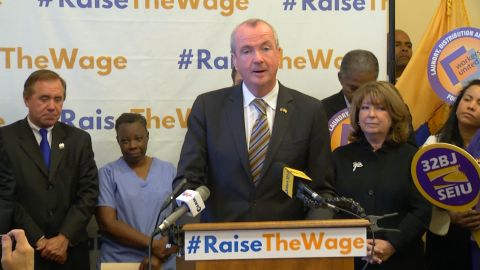Child care costs rise, stressing working parents and providers
From our partners at NJTV News:
By David Cruz
When new parents go back to work, they want to make sure that their little ones are being cared for in a safe, educational and engaging environment. However, rising child care costs are forcing some parents to choose between quality and affordability. Our partners at NJTV News report on what organizations and child care providers are doing to help parents find affordable, quality child care.
___________________________
Way before parents have gotten over that new baby smell, the meter on that bundle of joy has already started running.
Nowadays, with pressure on parents to get back to work faster, finding competent child care that a working parent can afford is becoming harder and harder.
“In New Jersey, child care is the largest item for an ALICE family in their survival budget,” says Kiran Handa Gaudioso, of the United Way, which runs a project called ALICE [Asset Limited, Income Constrained and Employed]. “It’s around $1,400 a month and that’s for two children, so child care is a tremendous burden, yet we need our kids to be in safe, high-quality learning experiences so that ALICE families can work every day.”
That’s about $17,000 a year for child care. On an income of $35,000 to $40,000, that’s almost half the household income. Throw in food, rent, transportation, etc. and, well, you get the idea.
The cost of these basics – throw in housing, health care and nutrition – has risen by 23 percent from 2007 to 2014. Meanwhile, the average wage increased by only 14 percent over that same time span.
Nathaniale Bonneau knows all about it. She’s a single mother of five, aged 2 all the way up through college. For her older kids she tried a number of options around Orange, which didn’t all meet her basic standards.
“The facility didn’t seem very clean. It didn’t seem as if they were being educated properly,” she says. “It just wasn’t where I envisioned my children getting their first look at the educational system. It just wasn’t for me.”
Then a friend told her about the West Orange Community House, a day care center and Abbott district preschool. Here, little ones have a gym to run around in, toys to play with and three meals a day, all under the supervision of actual certified teachers. The community house accepts kids as young as 13 months. And when they’re old enough they move into the pre-K level, where the community house has 10 classrooms. Mary Lou Bruno is a preschool social worker who’s been there for 20 years.
“We’re getting them ready for Kindergarten,” she says. “We make sure that our children, when they enter kindergarten, are more than ready to be successful.”
For most parents, affordability is a top priority. Bruno says after taking a parent on a tour of the facility recently, they got down to discussing dollars and cents.
“And she had this shocked look on her face and she said ‘first of all, when I enter my child’s classroom, I don’t see the things I see here, like the reading areas, and the computers, and the smart boards and the block areas.’ She was paying $1,000 a month for what she basically said was babysitting,” says Bruno.
The only way that’s possible is with subsidies, from government, and from some nonprofits like Programs for Parents, which helps working parents afford child care. Care for a child at The West Orange Community House from 8:30 a.m. to 5:30 p.m., two meals and a snack, plus pullups and diapers in some cases — is $685. Without a subsidy, working parents like Bonneau just wouldn’t be able to afford even inexpensive alternatives like the Community House.
“They’re in a very bad dilemma,” adds Bruno. “That’s when they have to start looking to family and friends to see if they can pay somebody to do that.”
Even with the governor moving New Jersey toward universal pre-K, many working parents can’t afford to wait for that because the supply of quality child care is not meeting the demand and that only forces the price to go up.



